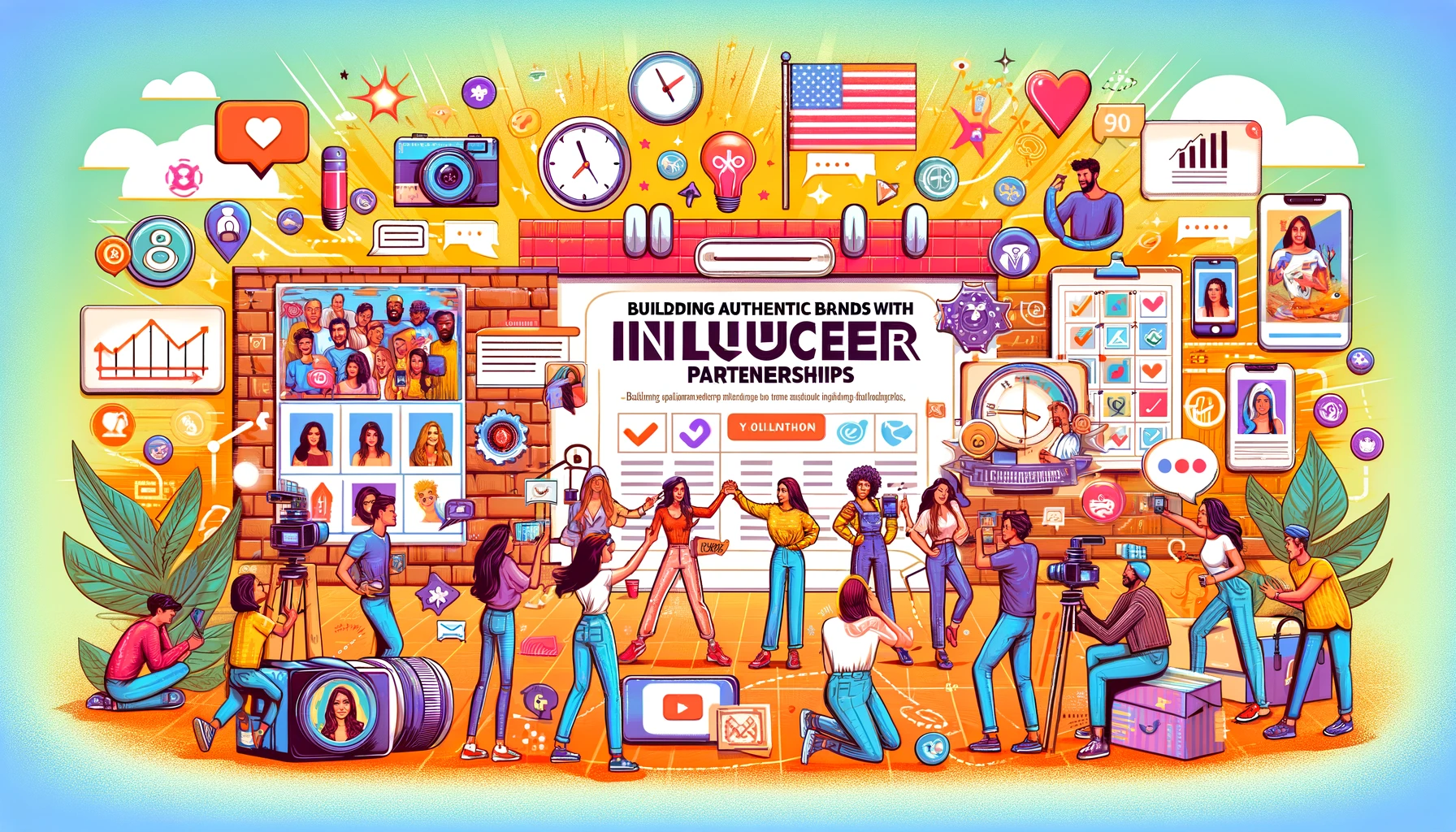
Did you know that 92% of consumers trust recommendations from individuals over brands? This statistic highlights the growing influence of social media personalities in shaping consumer behavior. In today’s digital age, influencer partnerships have become a key strategy for brands looking to build authenticity and trust. This post will delve into the concept of long-term influencer partnerships and their transformative impact on brand authenticity, providing you with practical strategies for successful collaborations.
Understanding Influencer Partnerships
Definition
Influencer partnerships are collaborations between brands and influencers that extend beyond one-off campaigns. These partnerships aim to create a sustained relationship, where influencers regularly promote the brand over an extended period.
Importance
Influencer partnerships play a crucial role in building trust and authenticity. Unlike one-off collaborations, long-term partnerships allow influencers to become genuine advocates for the brand, leading to more credible and relatable endorsements.
Types of Influencers
- Nano Influencers: 1K-10K followers. High engagement rates and personal connections with their audience.
- Micro Influencers: 10K-50K followers. Known for niche expertise and strong community bonds.
- Macro Influencers: 50K-1M followers. Broader reach but still maintain a personal touch.
- Mega Influencers: 1M+ followers. Massive reach but less personal engagement.
Benefits of Long-Term Influencer Partnerships
Consistency
Consistent messaging is key to maintaining brand integrity. Long-term partnerships ensure that the brand’s message is repeatedly reinforced, creating a cohesive and recognizable brand image.
Trust and Credibility
As influencers continuously promote the brand, their followers perceive these endorsements as more genuine and trustworthy. Over time, this builds deeper trust and credibility with the target audience.
Deeper Engagement
Sustained collaborations lead to increased engagement and loyalty. Audiences become more familiar with the brand through regular interactions, fostering a stronger connection.
Brand Advocacy
Influencers become true advocates for the brand, promoting it naturally in their content. This organic promotion resonates more with audiences compared to traditional advertising.
Finding the Right Influencers
Alignment with Brand Values
Identify influencers whose values and content align with your brand. This alignment ensures that the partnership feels natural and resonates with both the influencer’s and the brand’s audiences.
Audience Analysis
Analyze an influencer’s audience demographics and engagement rates to ensure they match your target market. High engagement rates indicate an active and interested audience.
Authenticity Check
Assess an influencer’s authenticity by reviewing their past collaborations and content. Look for genuine interactions with their followers and consistency in their messaging.
Strategies for Building Long-Term Collaborations
Initial Outreach
Approach influencers with a personalized message that highlights why you believe they are a good fit for your brand. Express genuine interest in their work and propose the idea of a long-term partnership.
Mutual Goals
Set mutual goals and expectations from the beginning. Ensure both parties are clear on the desired outcomes and how success will be measured.
Collaborative Planning
Involve influencers in the campaign planning and content creation process. This collaboration ensures that the content feels authentic and aligns with the influencer’s style.
Regular Communication
Maintain ongoing communication to nurture the relationship. Regular check-ins help address any issues and ensure that the partnership remains strong.
Flexibility
Allow influencers creative freedom to promote your brand in a way that feels natural to them. Flexibility fosters authenticity and keeps the content engaging.
Creating Effective Collaboration Agreements
Contracts and Agreements
Draft clear contracts outlining deliverables, timelines, compensation, and other key elements. A well-defined agreement sets the foundation for a successful partnership.
Clear Expectations
Clearly outline expectations regarding content, frequency of posts, and performance metrics. Transparency prevents misunderstandings and ensures both parties are on the same page.
Exclusivity Clauses
Consider including exclusivity clauses to prevent influencers from promoting competing brands. While this can strengthen the partnership, be mindful of the influencer’s need for creative freedom.
Measuring the Success of Influencer Partnerships
KPIs and Metrics
Track key performance indicators (KPIs) such as engagement rates, reach, conversion rates, and ROI to measure the success of influencer collaborations.
Tools and Platforms
Utilize tools and platforms like Google Analytics, Hootsuite, and social media insights to monitor and analyze the performance of influencer campaigns.
Feedback Loops
Establish feedback loops with influencers to gather insights and continuously improve the partnership. Regular feedback helps refine strategies and enhances future collaborations.
Case Studies and Examples
Successful Collaborations
- Glossier: Built a community-driven brand by partnering with micro-influencers who genuinely love their products. This strategy resulted in high engagement and brand loyalty.
- Daniel Wellington: Leveraged long-term partnerships with influencers across various niches, leading to massive brand growth and recognition.
Lessons Learned
- Authenticity is Key: Genuine partnerships resonate more with audiences.
- Consistency Matters: Regular collaborations reinforce brand messaging.
- Engagement over Reach: Focus on influencers with high engagement rather than just follower count.
Recap
Long-term influencer partnerships are a powerful strategy for building brand authenticity. By forming sustained relationships with influencers, brands can achieve consistent messaging, deeper engagement, and stronger trust with their audiences. Start by finding the right influencers, setting mutual goals, and maintaining regular communication to ensure a successful collaboration.

